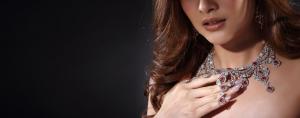Identifying Fake Precious Metals and Jewelry: Tips from The Quarter Smith in New Orleans
High-quality jewelry has fine details and finishes that cannot be easily copied. Misaligned engravings, uneven surfaces, or loosely set stones are red flags that indicate something is amiss”
NEW ORLEANS, LA, UNITED STATES, October 3, 2024 /EINPresswire.com/ -- In an era of growing demand for precious metals and jewelry, the market faces a parallel increase in counterfeit items. Whether in gold, silver, platinum, or gemstones, discerning genuine pieces from fakes has become crucial for consumers and collectors. The Quarter Smith, a prominent jewelry establishment in the French Quarter of New Orleans since 1978, emphasizes the importance of understanding how to identify fake precious metals and jewelry.— Ken Bowers
Ken Bowers, owner of The Quarter Smith, explains the growing complexity of this issue. "Counterfeiting has reached levels that make it difficult for even seasoned collectors to differentiate between real and fake pieces. It’s important to know what to look for, both visually and through physical tests."
Visual Identification Techniques
One of the most accessible ways to spot fake jewelry and metals is through close visual examination. Genuine items often have distinct markers that indicate their authenticity. According to Bowers, hallmarks or stamps are the first indicators to check. “Precious metals like gold, silver, and platinum have stamps indicating their purity. For instance, a piece marked '925' is sterling silver, while '750' indicates 18-karat gold," Bowers elaborates. "However, it's vital to be aware that counterfeiters often replicate these stamps, so they shouldn’t be the sole method of identification."
The weight and color of jewelry can also offer insights. Gold and silver items, particularly in higher purity forms, tend to have a certain weight and color profile. If a piece feels unusually light or if the coloring seems off, further examination is warranted.
"Real gold has a warm, yellow glow that is consistent throughout," Bowers continues. "Plated items might have a slightly different color or can reveal another metal underneath when scratched or worn down."
Magnet Testing for Precious Metals
Magnet testing is one of the simple yet effective methods to detect counterfeit jewelry. Precious metals like gold, silver, and platinum are non-magnetic. "If a piece of jewelry is attracted to a magnet, that's a strong sign it may contain ferrous metals," Bowers points out. However, he advises caution: "Not all fakes are magnetic, so it's just one tool among many to use in detection."
Acid Testing for Authenticity
Acid testing remains a tried-and-true technique for identifying real precious metals. This test involves applying a drop of acid to the jewelry and observing the reaction. Each metal reacts differently to various acid solutions, indicating the metal type and purity.
Ken Bowers emphasizes, "Acid testing should be done carefully, as it can damage the jewelry if not done correctly. It’s often best performed by a professional who understands the subtle reactions of metals to different acids."
Differences in Craftsmanship and Detailing
The craftsmanship of an item can reveal a lot about its authenticity. Precious metal jewelry often exhibits a certain finesse in design and finishing that is hard to replicate in counterfeit products. The details of engraving, the quality of the gemstone setting, and the uniformity of polish are signs of genuine, well-crafted pieces.
“High-quality jewelry has fine details and finishes that cannot be easily copied. Misaligned engravings, uneven surfaces, or loosely set stones are red flags that indicate something is amiss,” notes Bowers. “One should also be aware of visible seams, as genuine pieces typically have seamless construction.”
The Importance of Professional Evaluation
While some detection techniques can be done at home, Bowers stresses that professional evaluation remains the most reliable method for identifying fake jewelry and precious metals. Jewelers, like those at The Quarter Smith, use specialized tools, in-depth knowledge, and experience to analyze a piece comprehensively.
"Professional evaluations go beyond the surface and delve into the metal content, craftsmanship, and authenticity of gemstones. Testing equipment, such as electronic gold testers or X-ray fluorescence machines, can accurately identify a piece's composition and detect plating or alloy content," Bowers explains.
Moreover, gemstone identification requires particular expertise. Fake or lab-created stones have become increasingly sophisticated, making it hard to differentiate them from natural gems without the appropriate tools and knowledge. A certified gemologist can distinguish between natural, synthetic, or imitation stones by examining characteristics like inclusions, color consistency, and refractive properties.
Common Fakes in the Market
Certain items are more commonly counterfeited than others. Popular items like gold chains, luxury watches, diamond rings, and branded jewelry pieces are prime targets for counterfeiters. "Rolex watches, for instance, are one of the most faked luxury items in the world," shares Bowers. “These counterfeits can be very convincing to the untrained eye, but there are key details – such as the weight, movement, and finishing – that can give them away."
Bowers recommends caution when purchasing such high-demand items, especially from online sources or unverified sellers. "It's always advisable to seek out a reputable jeweler who can provide transparency about a piece’s origin and quality."
Educating Consumers for Safer Purchases
Consumer education is at the forefront of detecting counterfeit metals and jewelry. Being informed about the basic characteristics of genuine metals and gemstones, as well as knowing what to look for in terms of hallmarks, weight, and color, empowers buyers to make informed decisions.
Ken Bowers concludes, "The best defense against counterfeits is knowledge. Understanding the methods to verify authenticity can help protect against buying fake items and ensure that each purchase is a wise investment."
Morgan Thomas
Rhino Digital, LLC
+1 504-875-5036
email us here
Visit us on social media:
Facebook
Legal Disclaimer:
EIN Presswire provides this news content "as is" without warranty of any kind. We do not accept any responsibility or liability for the accuracy, content, images, videos, licenses, completeness, legality, or reliability of the information contained in this article. If you have any complaints or copyright issues related to this article, kindly contact the author above.


